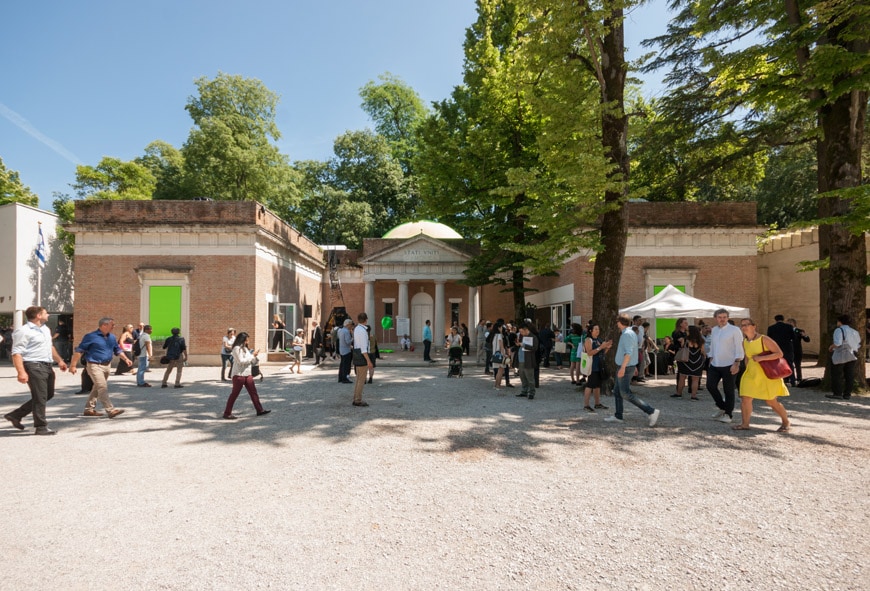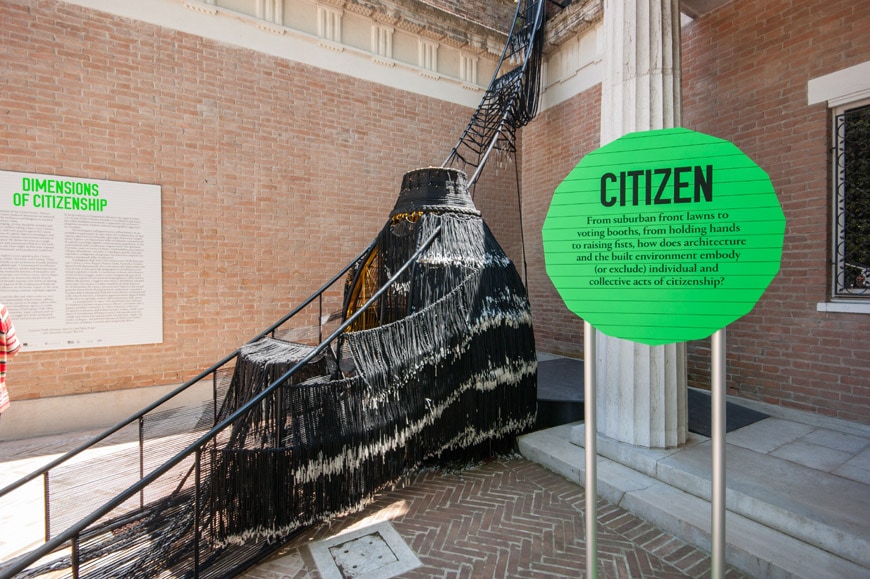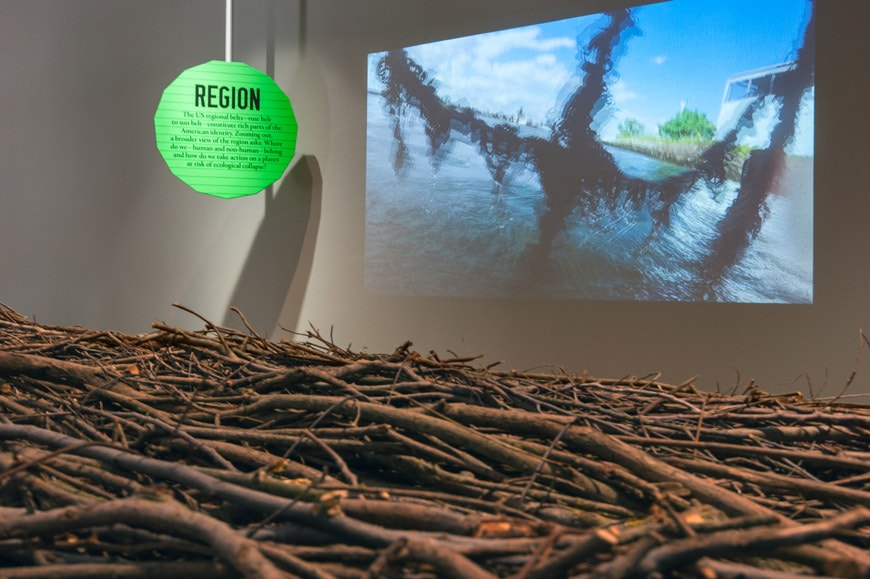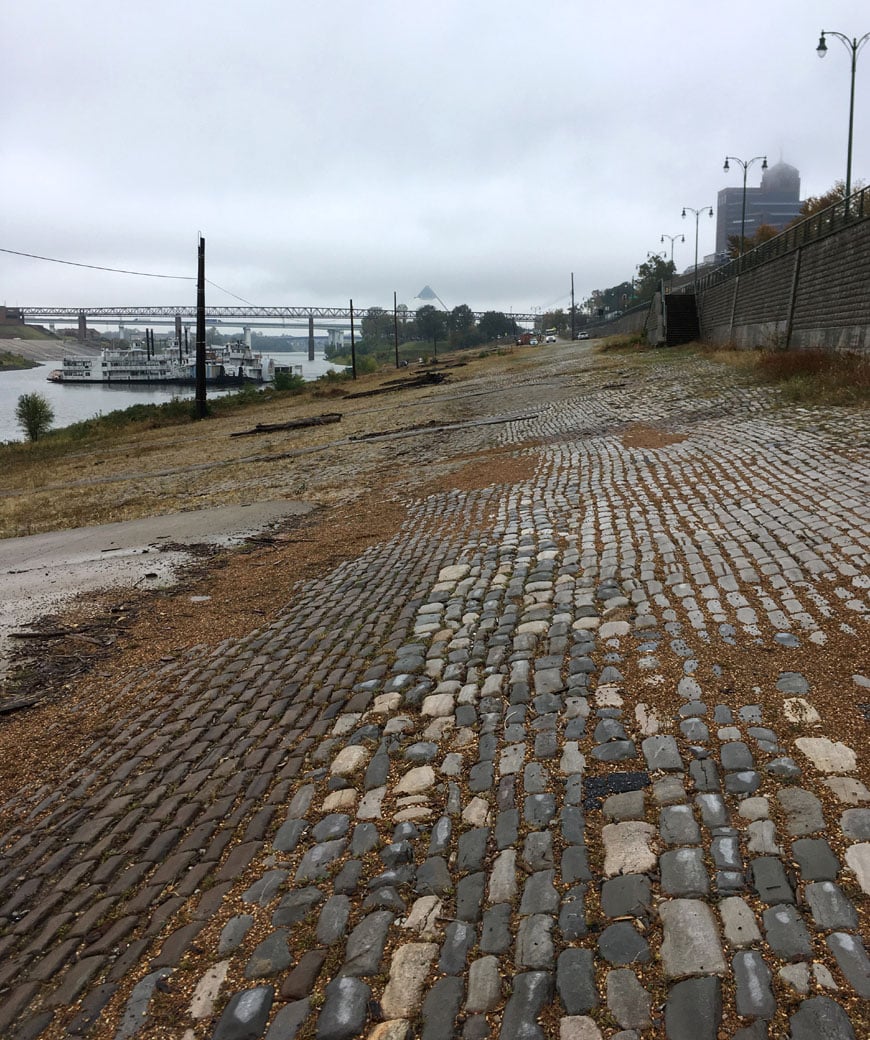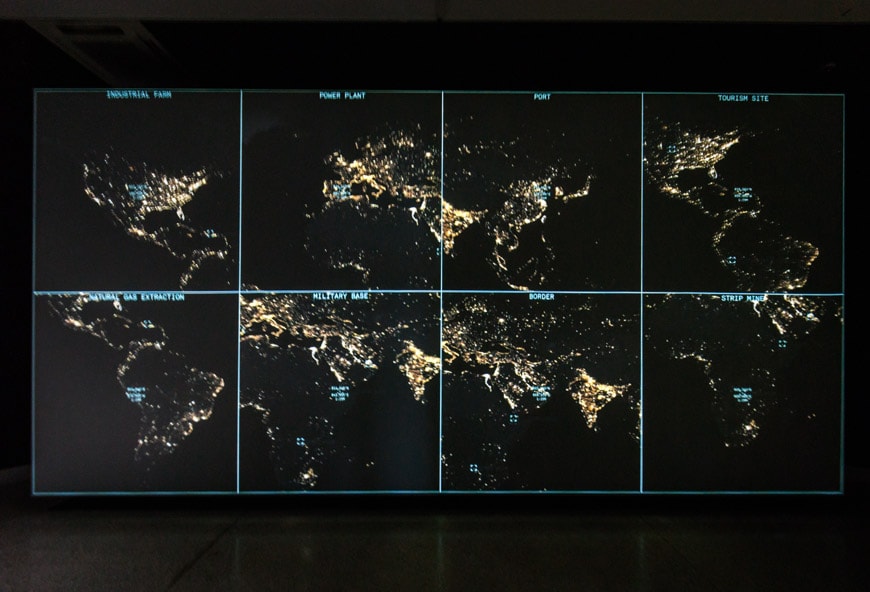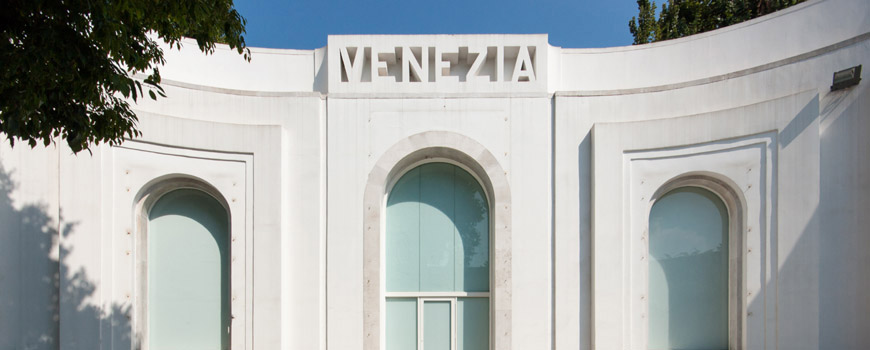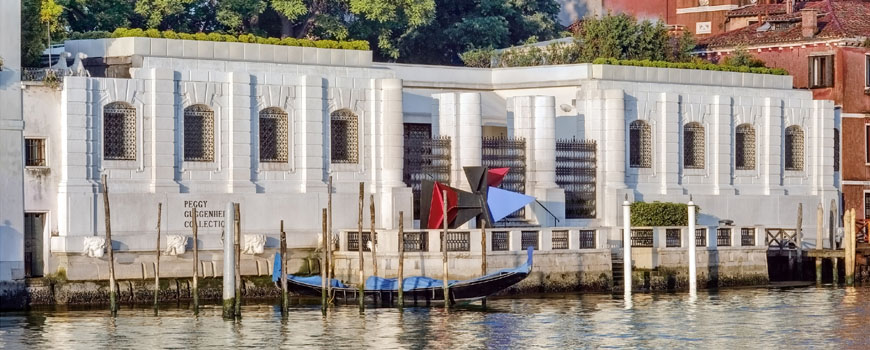U.S. Pavilion – Dimensions of Citizenship | 2018 Venice Architecture Biennale
The U.S. Pavilion at the 2018 Venice Architecture Biennale; photo © Inexhibit
Dimensions of Citizenship – U.S. Pavilion at 2018 Venice Architecture Biennale
At the 2018 Venice Architecture Biennale, “Dimensions of Citizenship”, the exhibition of the United States Pavilion, asks architects and designers to envision what it means to be a citizen today.
Theme
The exhibition is an effort aimed to investigate how the very concept of citizenship has changed in recent times and is changing these days.
Does the conventional notion of citizenship is being undermined by transnational flows of capital, digital technologies, geopolitical transformations, climatic change, populism, and social inequality? How architects and designers should respond to such transformation and in which way their traditional role in contemporary society is changing because of it?
To cope with a so ambitious theme, the U.S pavilion’s curators have articulated the exhibition into seven “spatial scales” – Citizen, Civitas, Region, Nation, Globe, Network, and Cosmos – developed through commissioned installations by seven teams – comprising architects, designers, artists, and theorists – whose works will interrogate different spatial conditions of design and citizenship.
Participants
The seven exhibitors are Amanda Williams & Andres L. Hernandez (Chicago, IL), Design Earth (Cambridge, MA), Diller Scofidio + Renfro (New York, NY), Estudio Teddy Cruz + Fonna Forman (San Diego, CA), Keller Easterling (New Haven, CT), SCAPE (New York, NY), and Studio Gang (Chicago, IL).
The seven architecture practices were selected by a curatorial team comprising Niall Atkinson, Associate Professor of Architectural History at the University of Chicago; Ann Lui, Assistant Professor at the School of the Art Institute of Chicago; Mimi Zeiger, an independent critic, editor, curator, and educator; and associated curator Iker Gil, SAIC faculty member, Director of MAS Studio and founder of the design journal MAS Context.
“These seven teams represent the breadth of design practice today: from social to speculative; technical to theoretical. They are united by researched-based methodologies and the drive to use that research to push boundaries—formal, disciplinary, and political.” the curatorial team says.
The curators of the U.S. Pavilion at the 2018 Venice Architecture Biennale, left to right: Iker Gil, Mimi Zeiger, Niall Atkinson, and Ann Lui. Photo by Nancy Wong
The installations
In detail, the seven installations are:
Thrival Geographies (in My Mind I See A Line) by Amanda Williams + Andres L. Hernandez, in collaboration with Shani Crowe – Scale: Citizen
Developed in collaboration with Chicago-based artist Shani Crowe (renowned for his sculptural coiffure which relates to the diasporic African culture) and installed in the pavilion’s courtyard, the installation focuses on how race shapes notions of identity, shelter, and public space in historically Afro-American communities.
Shani Crowe, Braid Study (2017). Photo courtesy of Shani Crowe
Amanda Williams + Andres L. Hernandez, with Shani Crowe, Thrival Geographies, installation view; photo © Inexhibit
Stone Stories by Studio Gang – Scale: Civitas
Stone Stones investigates how redesigning a city’s public space can be an exercise of citizenship and civic empowerment. The installation gives an inclusive urban vision for Cobblestone Landing, a relatively unknown yet historically important site in Memphis, Tennessee. Hundreds of cobblestones were shipped from Memphis to Venice and used as a platform to share the stories of Memphians past and present, thus allowing visitors of the 2018 Biennale to interact with a distant public space and with the citizens who are building its urban future.
Studio Gang, Stone Stories, installation views; photos © Inexhibit
Memphis Landing in 2018 is a mosaic of nine different types of stone that speaks directly and indirectly to the city’s history. These physical qualities, as well as the central location and ambiguous cultural meaning, make it an important site of civic memory waiting to be revealed and shared. Photo courtesy of Studio Gang
Ecological Citizens by SCAPE – Scale: Region
Developed by NY-based architectural studio SCAPE in collaboration with Universitå di Bologna and the Italian Institute of Marine Sciences, Ecological Citizens takes the Venetian Lagoon as a globally significant case of a tidal region under ecological threat and particularly focuses on possible solutions and design strategies for the lagoon’s La Certosa island to demonstrate that landscape architecture can be a tool for fostering and re-imagining the response of citizens to climate change.
Vanishing intertidal landscape, Venice Lagoon (2017). Photo by Andrea Barbanti, courtesy of SCAPE
MEXUS: A Geography of Interdependence by Estudio Teddy Cruz + Fonna Forman – Scale: Nation
MEXUS reveals a transnational zone comprised of eight watershed systems shared by Mexico and the United States, thus challenging the way we think about national boundaries, inviting us to reason about the idea of a coexistence based on cooperative opportunities between divided communities.
Estudio Teddy Cruz + Fonna Forman, MEXUS, installation view; photo © Inexhibit
The Nation Against Nature, photo series from MEXUS (2017), Estudio Teddy Cruz + Fonna Forman. The US-Mexico continental boundary collides with cross-border environmental systems that force interruptions and gaps in the border wall. A new wall proposes to close these gaps, further impacting these transnational ecologies and the shared destiny of border communities. Photo courtesy of Estudio Teddy Cruz + Fonna Forman.
In Plain Sight by Diller Scofidio + Renfro, Laura Kurdan, Robert Gerard Pietrusko, with Columbia Center for Spatial Research
In Plain Sight by Diller Scofidio + Renfro is a multimedia installation that creates a visual depiction of the living conditions of people on our planet made by using data drawn from images created by the Suomi National Polar-orbiting satellite, a next-generation Earth-observing satellite system and the result of a partnership between NASA, the National Oceanic and Atmospheric Administration, and the Department of Defense. Comparing two images of the Earth taken at 1:50 pm and 1:30 am, In Plain Sight shows us a sort of geographical map of belonging and exclusion, composed of places with many people and no lights, and those with bright lights and no people.
For example, luxury tourist resorts in southern Africa, where no people live permanently, or military bases in remote Asian lands are the most striking examples of territories in which electric and lighting networks are reserved for a small elite of wealthy foreigners, while local communities keep on living without any reliable access to public power sources essential for their daily life, safety, and economic development.
Diller Scofidio + Renfro, In Plain Sight, U.S. Pavilion 2018 Venice Architecture Biennale; photos © Inexhibit
Nighttime Lights, Canada and Northern United States (2016), Diller Scofidio + Renfro, Laura Kurdan, Robert Gerard Pietrusko, with Columbia Center for Spatial Research. Photo: NASA Goddard Space Flight Center. Black Marble 2016
MANY by Keller Easterling – Scale: Network
MANY is an online platform conceived by American architect and teacher Keller Easterling and her team to facilitate migration by matching the talents of migrants with the multitude of
opportunities available around the world. MANY favors cosmopolitan mobility over national identity, at the same time, using network theory to rethinking the possibly outdated traditional notion of citizenship.
MANY by Kelly Easterling with MANY (2017)
Cosmorama, Planetary Ark, and Pacific Cemetery by Design Earth – Scale: Cosmos
For Dimensions of Citizenship, Planet Earth (led by El Hadi Jazairy and Rania Ghosn) created Cosmorama-Mining the Sky, Planetary Ark, and Pacific Cemetery, three off-world speculative designs which, collectively, investigate the space above Earth both as the iconic stage of the space exploration epic history and as a new possible territory for human occupation at a time when prospects of instability and extinction have become normal on our planet.
The installation by Design Earth, U.S. Pavilion, 2018 Venice Architecture Biennale; photo © Inexhibit
Planetary Ark 11/31 (All Aboard) the Architekton (2018), Design Earth. Image courtesy of Design Earth
Collateral exhibitions and program of activities
Together with those seven installations, the exhibition also features a collection of films and videos, on view in the pavilion’s rotunda, made by Frances Bodomo, Mandana Moghaddam, David Rueter and Marissa Lee Benedict, Mika Rottenberg, and Liam Young.
Finally, Form N-X00: New Forms for Citizenship is a collateral project aimed to expand our current understanding of citizenship and based on a growing collection of images and short texts through which international architects, designers, writers, artists, and thinkers give their thoughts on how inclusion and exclusion are spatially constructed.
Talks, debates, roundtables, live performances, and special events are also part of the program of activities and events of the U.S. Pavilion.
The exhibition and graphic design of the United States Pavilion at the 2018 Venice Architecture Biennale were conceived by Project Projects / IN-FO.CO led by Adam Michaels and Shannon Harvey.
copyright Inexhibit 2025 - ISSN: 2283-5474

